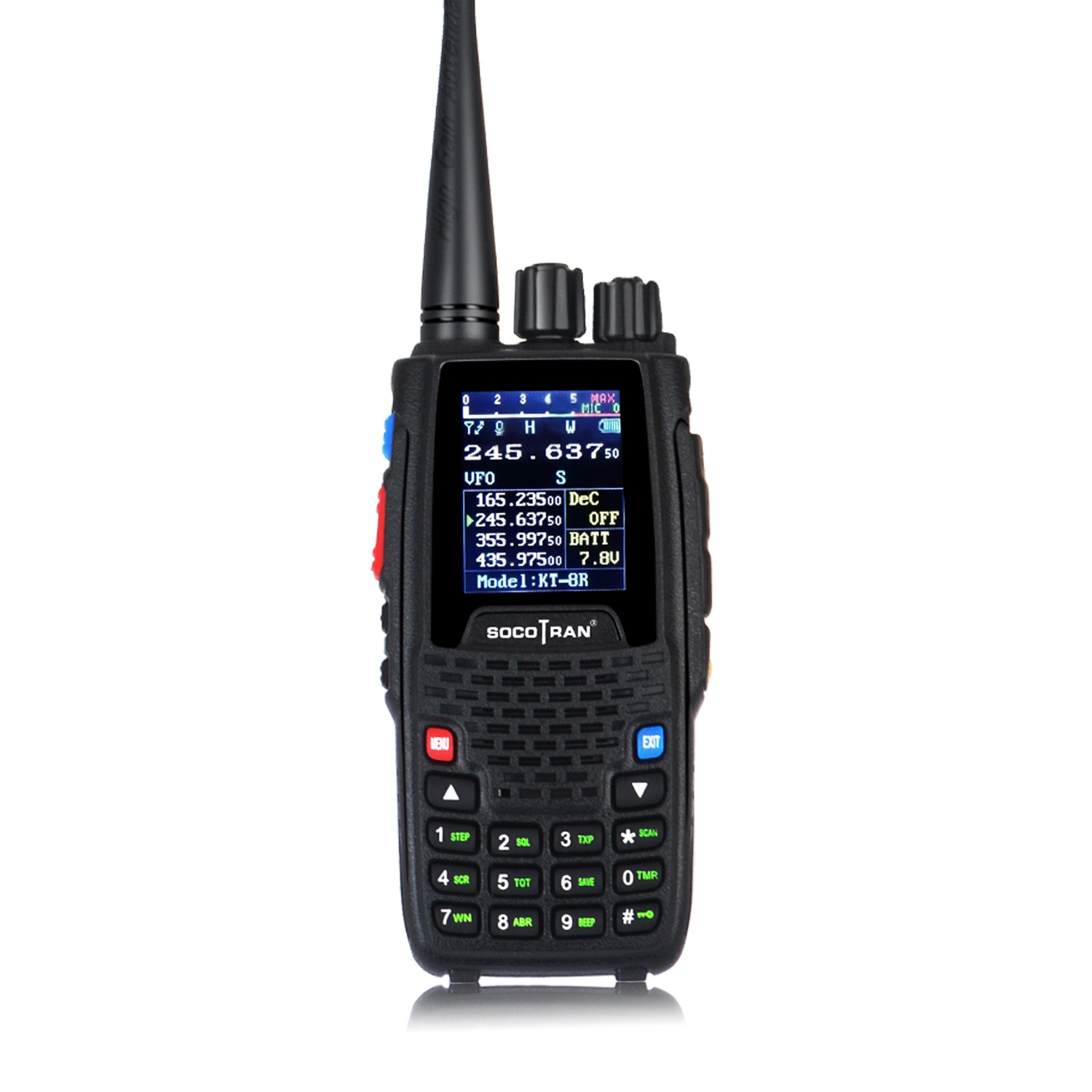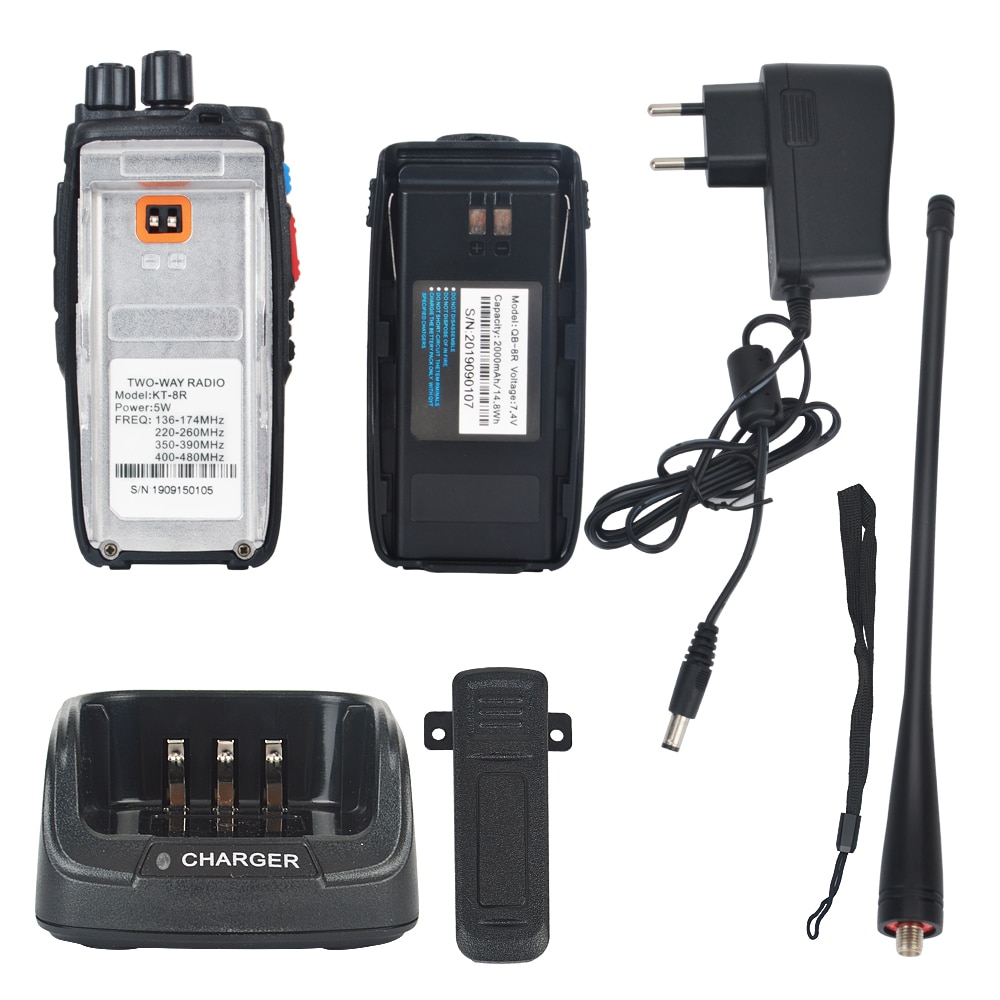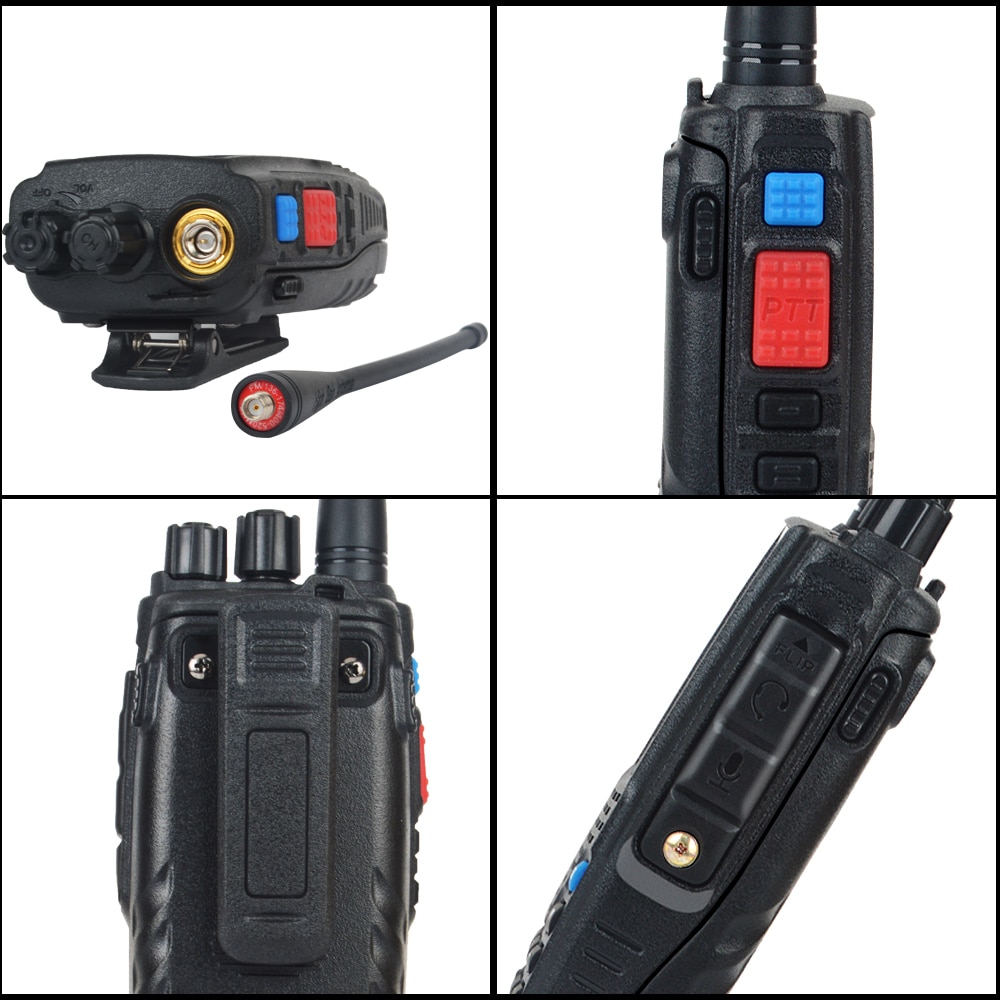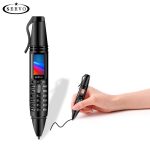Description
- Brand Name: SOCOTRAN
- Battery Capacity(mAh): 2000mAh
- Origin: CN(Origin)
- Is_Display: Yes
- Waterproof / Water-Resistant: No
- Walkie Talkie Type: Portable
- Maximum Range: 3km-5km
- Output Power(w): 3w-5w
- Certification: CE
- Model Number: KT-8R
- Frequency Range: 136-147Mhz 400-470mhz 220-270mhz 350-390mhz
- Dimensions: 128x62x35mm
- Storage Channel: 200 channels
- Material: Plastic
- Color: Black
- Operate Voltage: 7.4V
- Output Power: 4W
- Quad frequency: Yes
- Battery capacity: 2000mAh
- Display: Large Color display
- FM Function: Yes
- Weight: 230g
Quad Band Walkie talkie UHF VHF 136-147Mhz 400-470mhz 220-270mhz 350-390mhz 4 Band Handheld Two Way Radio Ham Transceiver Socotran KT8R
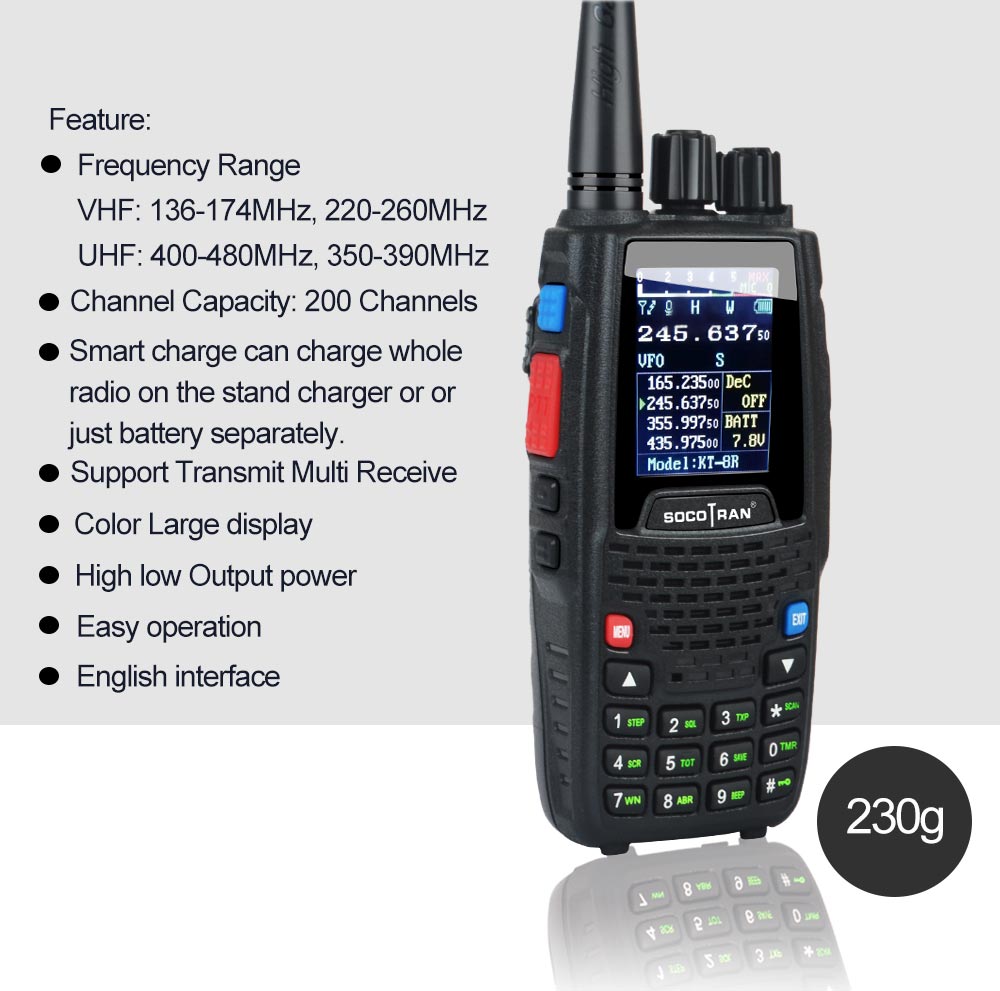
Main Feature:
Quad band, Quad Standby
FM Radio: 65-108MHz (Reception )
Fashion color screen
High low Output power
Easy operation
English interface
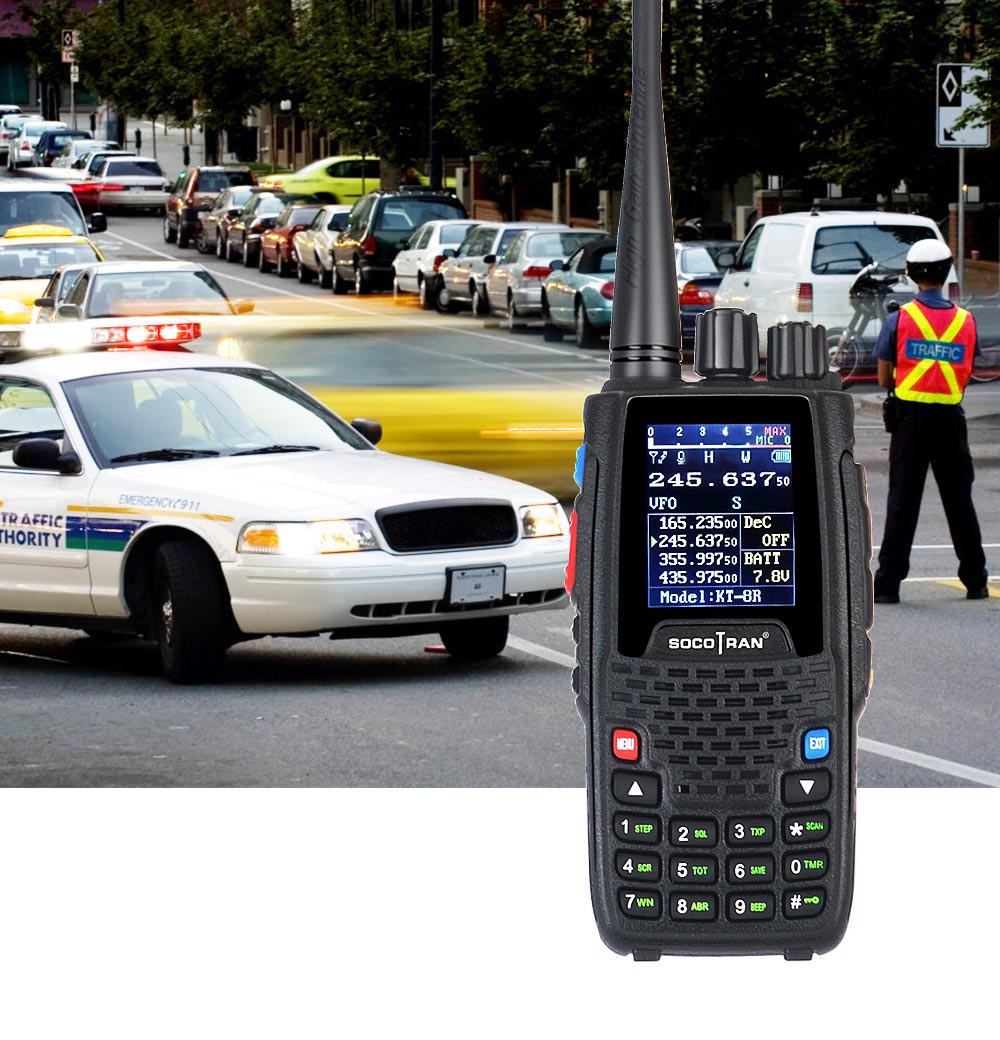
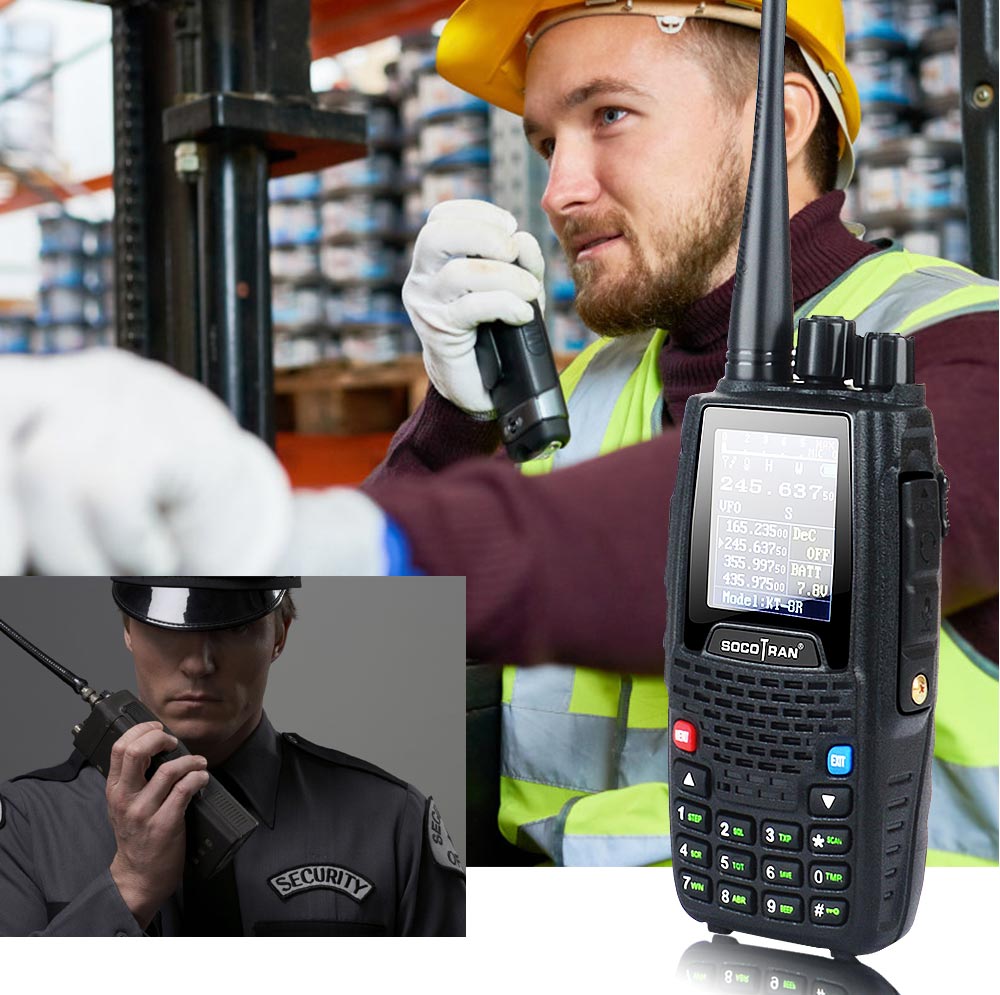
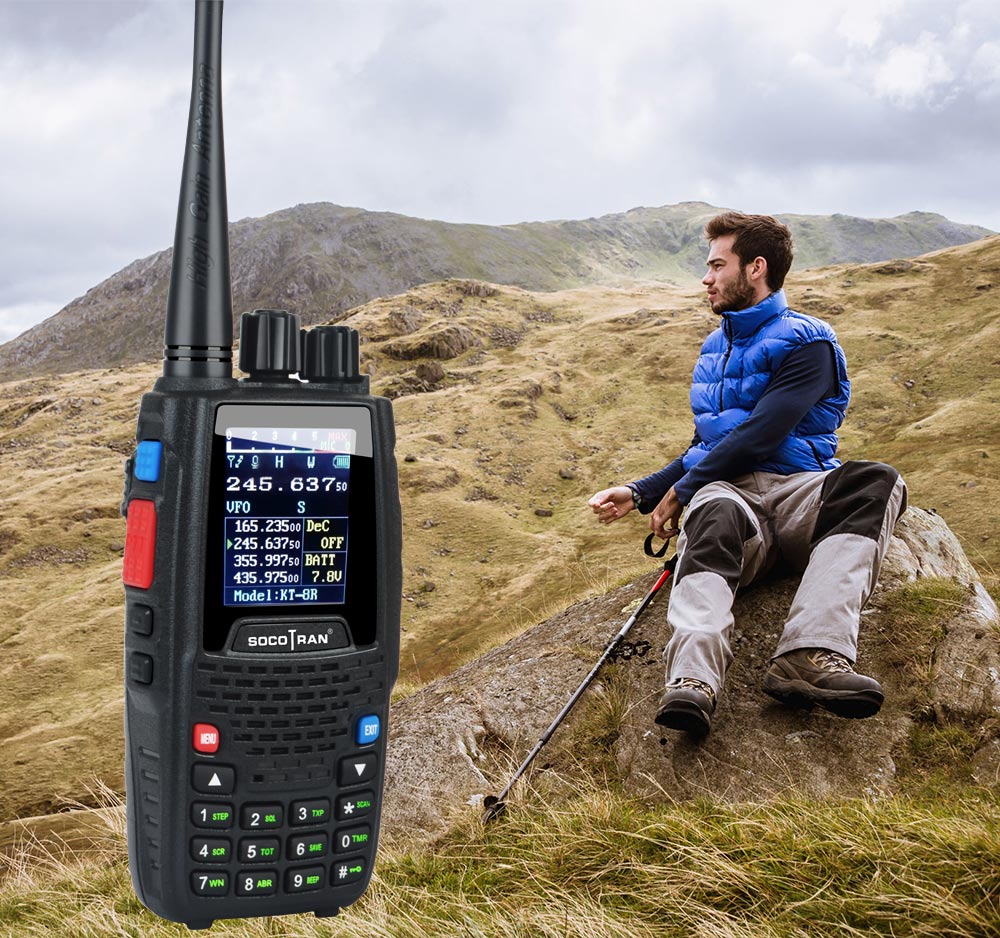
Specification:
General
|
Frequency Range |
VHF: 136-174MHz, 220-260MHz UHF: 400-480MHz, 350-390MHz |
|
|
Channel Capacity |
200 Channels |
|
|
Frequency Stability |
±2.5ppm |
|
|
Frequencyl Step |
2.5K/5.0K/6.25K/10.0K//12.5K/25.0KHz |
|
|
Working Voltage |
7.4V DC±15% |
|
|
Squelch Setup |
|
|
|
Antenna impedance |
50ohm |
|
|
Operating Temperature |
-20~+60℃ |
|
|
Dimension(W*H*D) |
128*62*35mm |
|
|
Weight |
230g |
Receiver
|
|
Wide Band |
Narrow band |
|
Sensitivity |
≤0.25μν |
≤0.35μν |
|
Channel chioce |
≥70dB |
≥60dB |
|
Intermodulation |
≥65dB |
≥60dB |
|
Spurious Rejection |
≥70dB |
≥70dB |
|
Audio response |
+1~~3dB(0.3~3KHz) |
+1~~3dB(0.3~2.55KHz) |
|
Signal to noise ratio |
≥45dB |
≥40dB |
|
Audio distortion |
≤5% |
|
|
Audio output power |
≥1W±10% |
|
Transmitter
|
|
Wide Band |
Narrow band |
|
Output power |
4W |
|
|
Modulation Mode |
16KΦF3E |
11KΦF3E |
|
Channel Power |
≥70dB |
≥60B |
|
Signal noise ratio |
≥40dB |
≥36dB |
|
Parasitic harmonic |
≥60dB |
≥60dB |
|
Audio response |
+1~~3dB(0.3~3KHz) |
+1~~3dB(0.3~2.55KHz) |
|
Audio distortion |
≤5% |
|
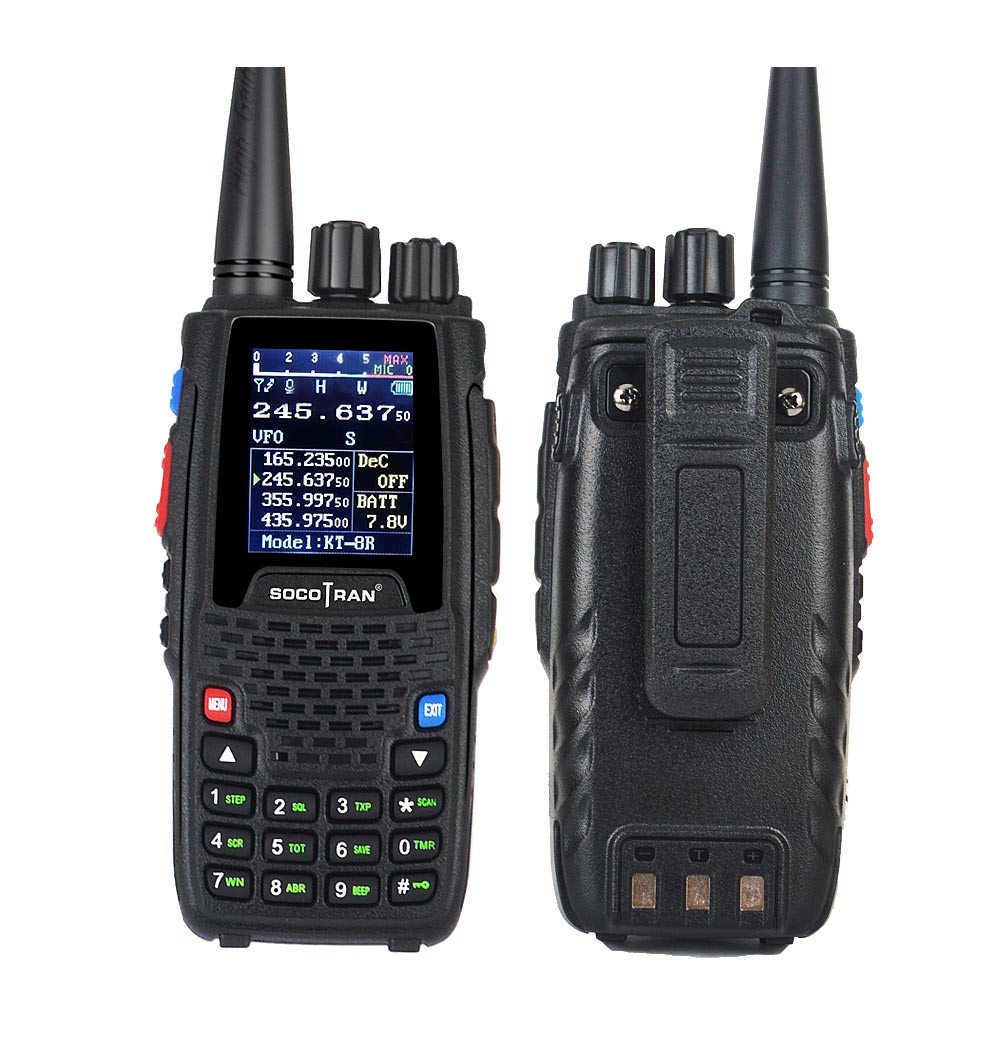
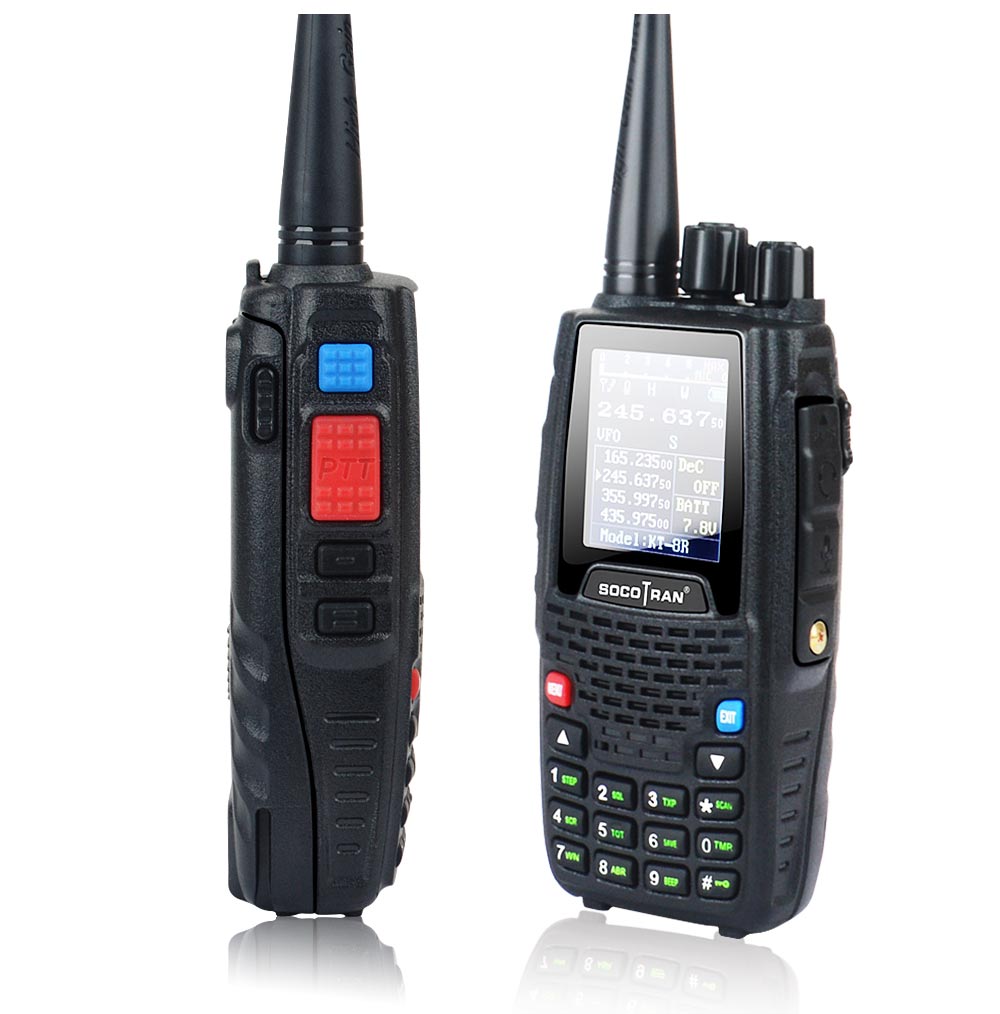
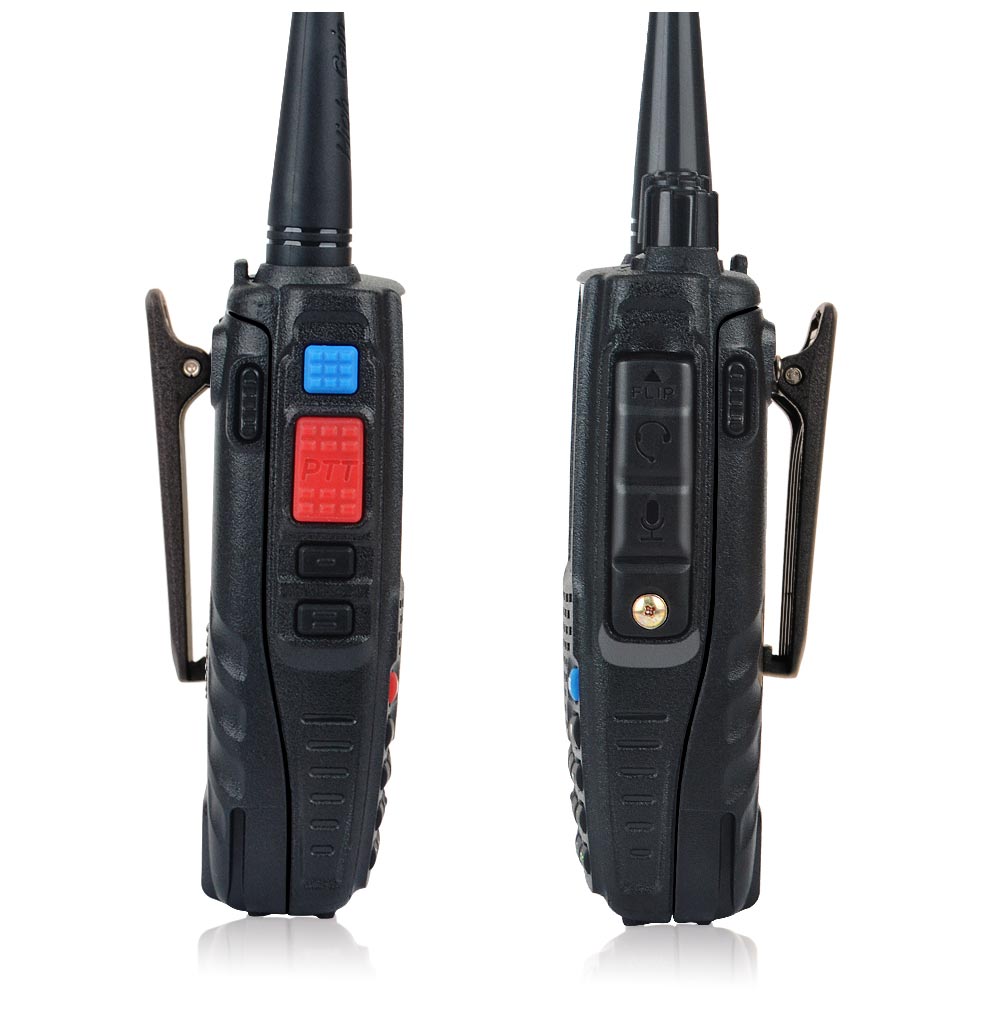

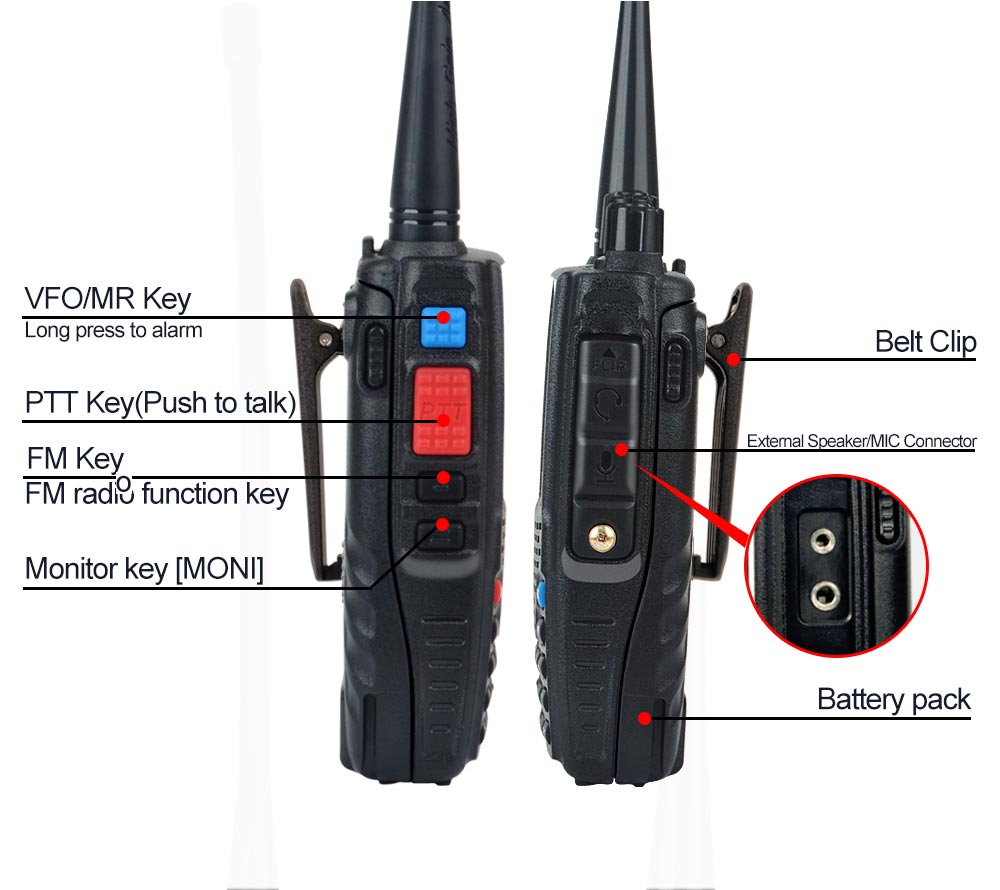
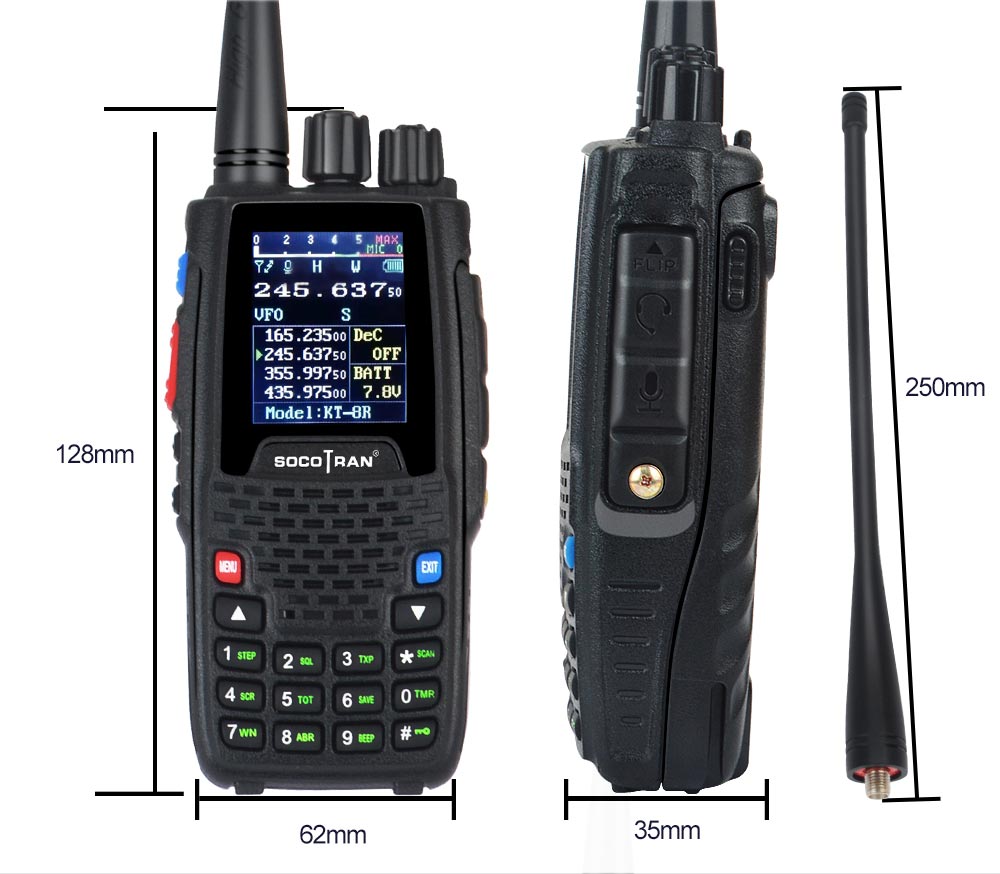
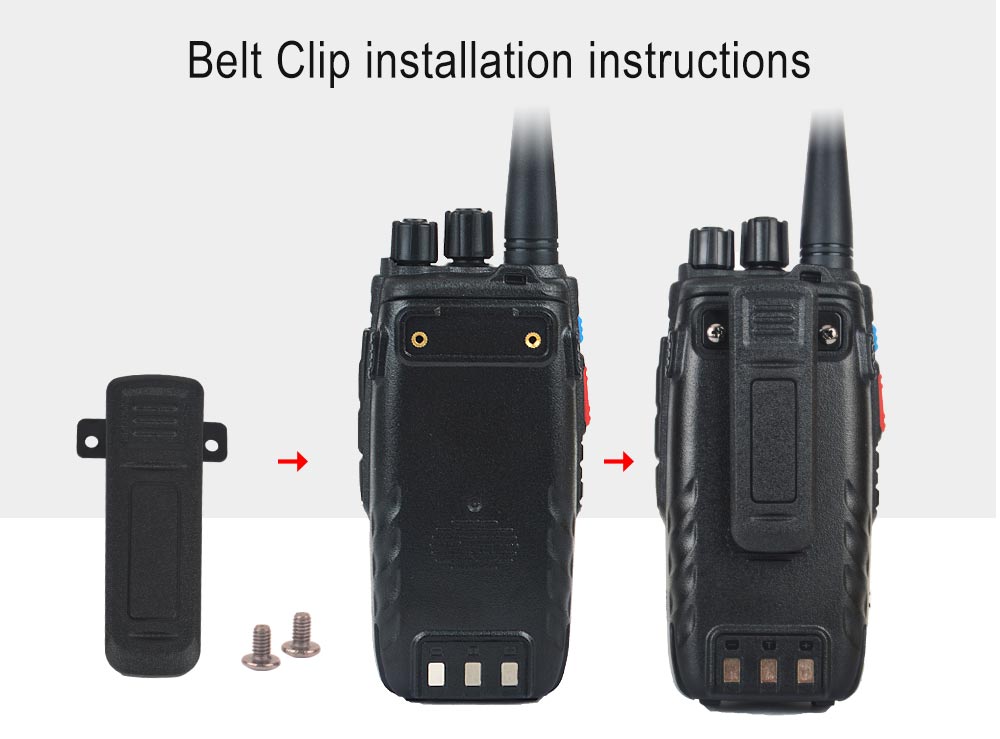
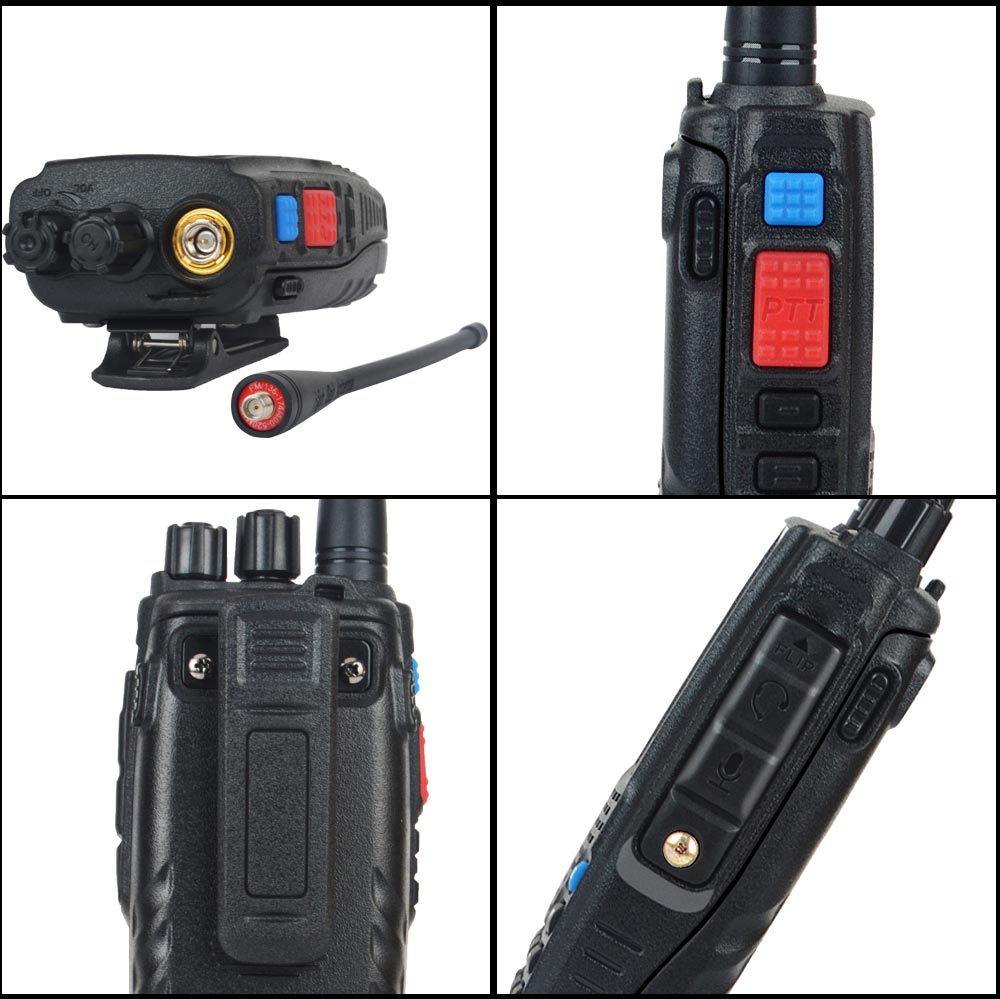
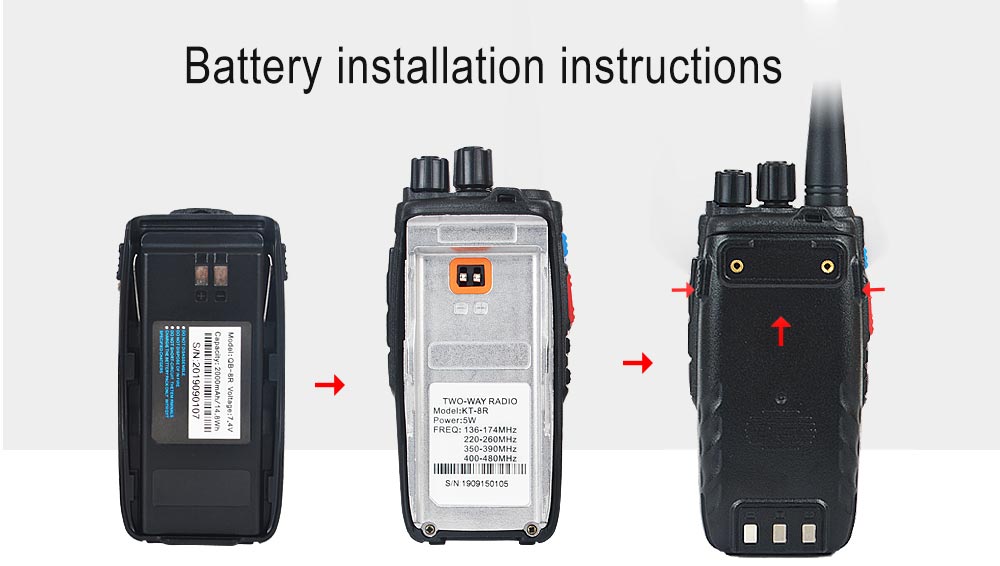
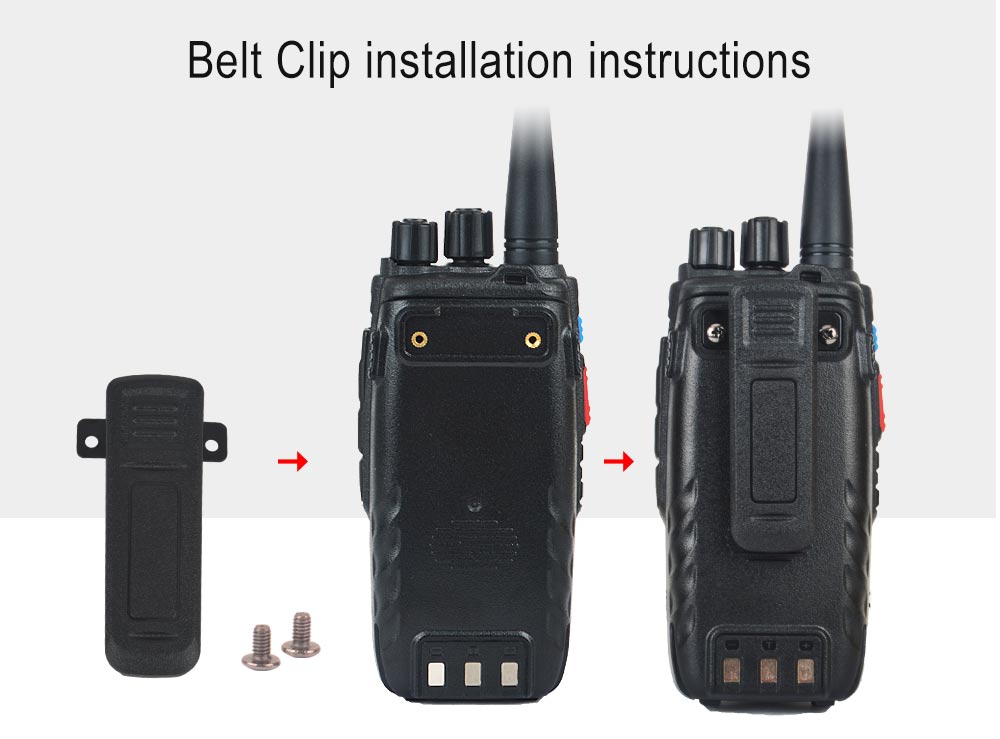
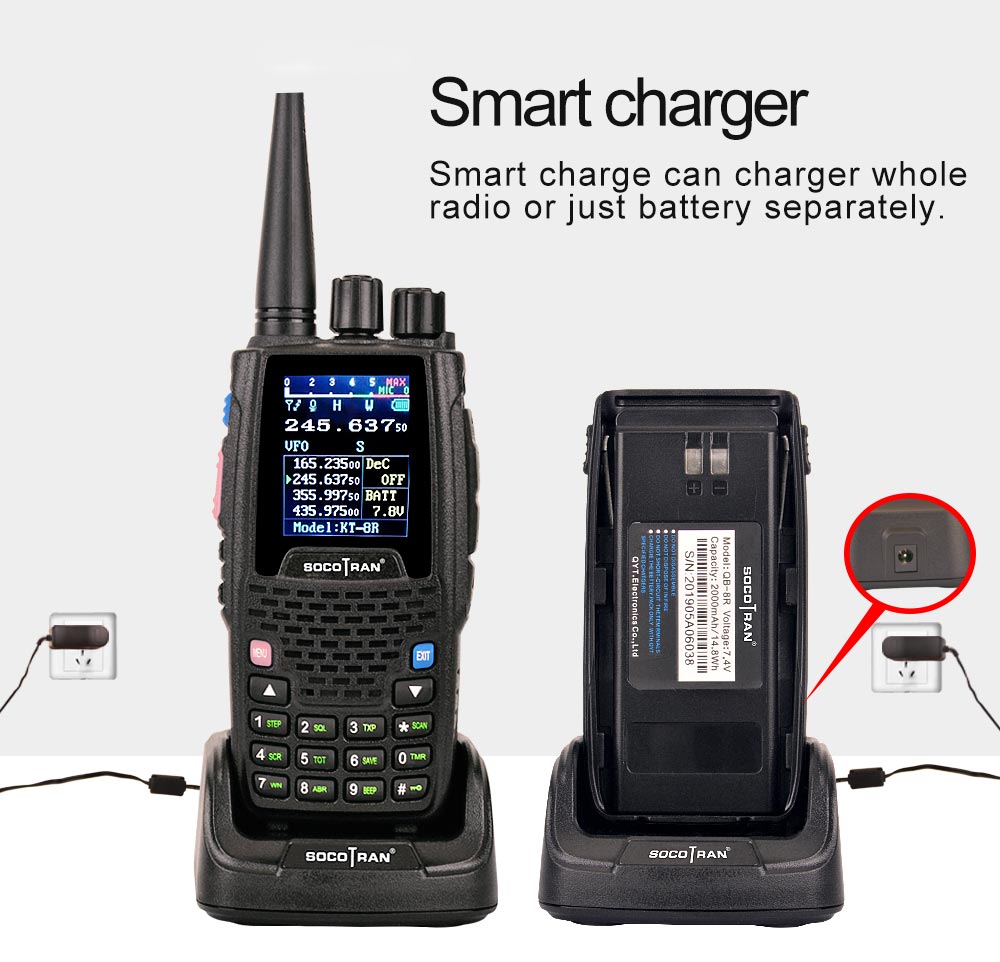
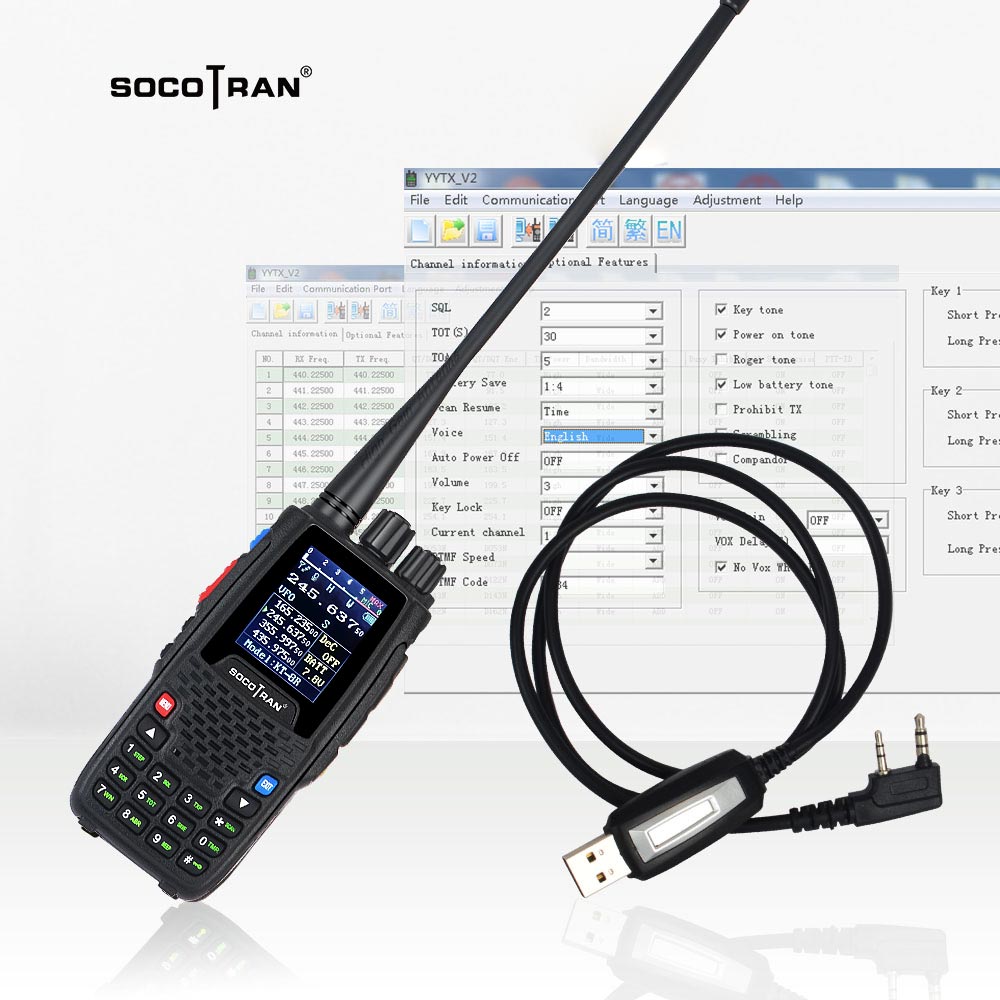
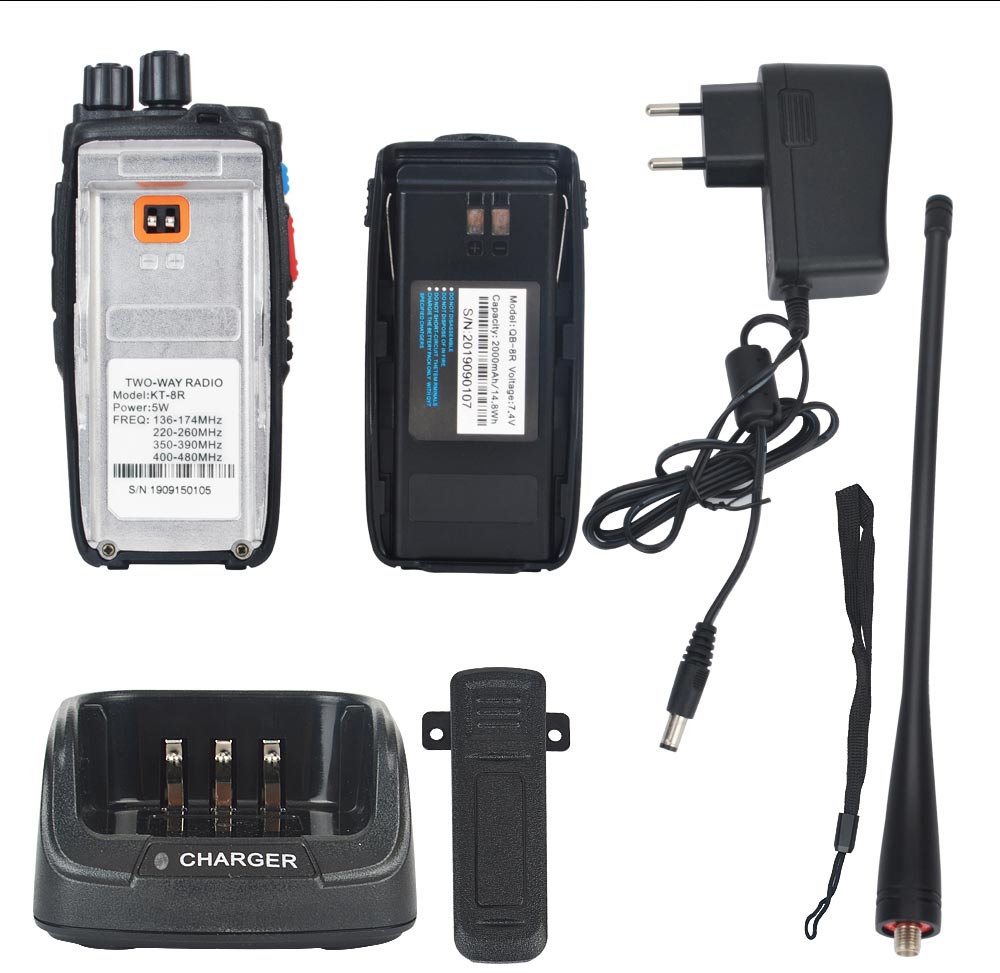
Standard package:
1× KT-8R Quad Band Radio
1× 7.4V 2000mAh Li-ion Battery Pack
1× SMA-Female Quad Band High Gain Antenna
1× Belt Clip
1× ENG Manual
1× Desktop Charger ( 100V ~ 240V ) with Correct Adapter for your Country
1× Wrist Strap
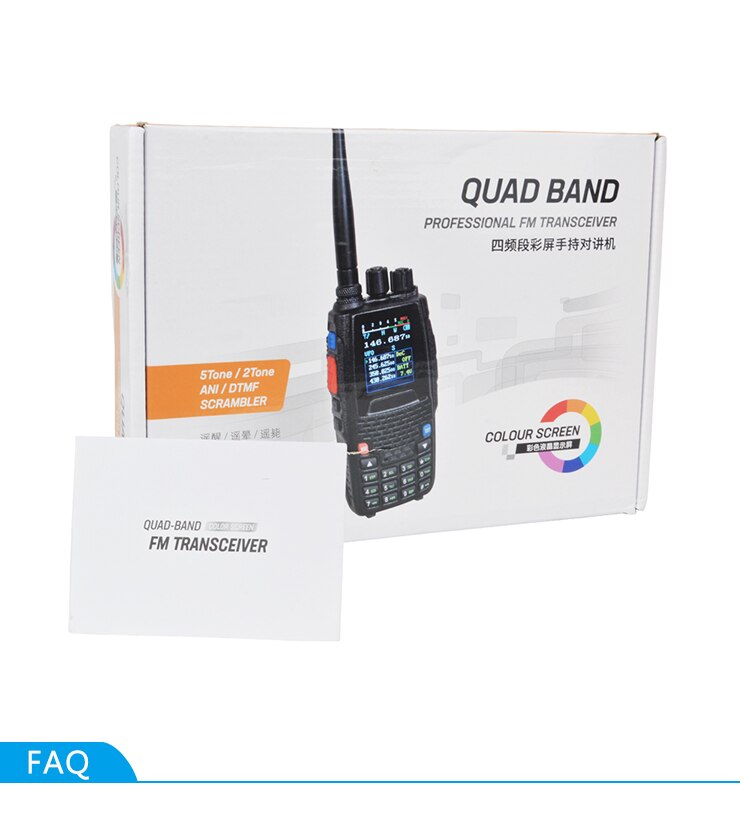
Q1:Can I use this radio wih my radio frequency 446MHz.
A1:Yes,this radio is support Quad Band,VHF: 136-174MHz, 220-260MHz
UHF: 400-480MHz, 350-390MHz.
Q2.Can I Standby two different frequency in the same time?
A2:Yes,the most you can set up to standby 4 frequency,Transmit Multi Receive,please refer to page 15 of the manual.
Q3.Is this radio with Programming software ?
A3:If you need the Programming Software,please write message us and leave your email,so we can send it to you.
Q4.Where can I get the usb programming cable?
A4:We sell with Standard package and Standard package add programming cable,when you order,you can choose it.
Q5.How to program with software?
A5:You can program in computer.
Q6.Is Connectivity a K type.
A6:Yes,the connect port for programming cable is K type.
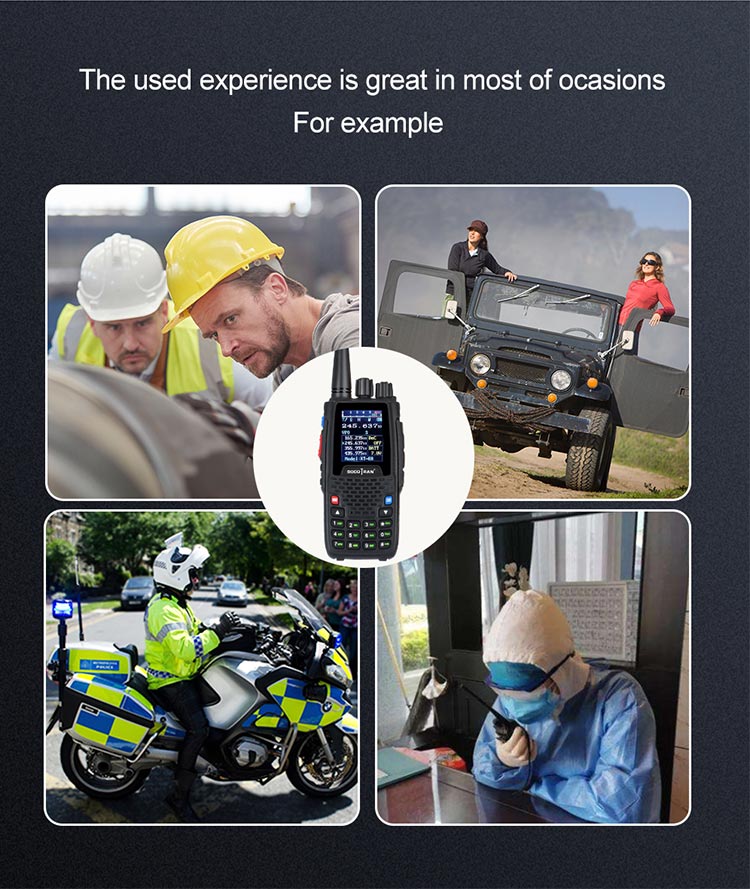
VOX function
VOX function is also called Hands Free,with vox function, you can talk directly to the walkie talkie microphone without pressing the PTT button, and the signal will be transmitted automatically once your voice is detected. KT-8R walkie talkie has 10 VOX sensitivity levels. The higher the level, the more sensitive the VOX response will be
Language
Support English / Chinese, you can set up in the display screen menu.
Monitor Both VFO & MR Modes
You can toggle from VFO and MR (Memory Recall) mode by pressing the [VFO/MR] button.
The VFO/MR mode will only toggle on the current selected A/B/C/D line -while the other channel lines will remain on channel or memory mode as they were selected.
This allows you to monitor channel and frequency mode simultaneously.
Channel selection
There are two modes of operation: Frequency (VFO) mode,and Channel or Memory (MR) mode.For everyday use,Channel (MR) mode is going to be a whole lot more practical than Frequency (VFO) mode. However,Frequency (VFO) mode is very handy for experimentation out in the field.
Frequency (VFO) mode is also used for programming channels into memory.For details on how to program your transceiver see Chapter “ Programming”.
Ultimately which mode you end up using will depend entirely on your use case.

